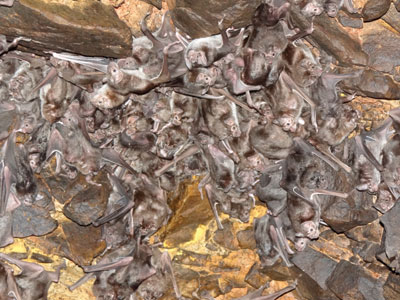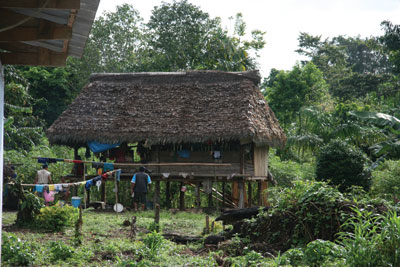Human rabies virus exposure detected in Peruvian Amazon
Rabies virus neutralizing antibodies were detected in seven of 63 humans tested in two communities in the Peruvian Amazon, according to CDC researchers, including six unvaccinated people who reported bat exposure.
Rabies virus ribonucleoprotein (RNP) immunoglobulin G (IgG) antibodies were found in three individuals, two of which also had the rabies virus neutralizing antibodies (rVNAs).
“This finding is important because it suggests that some people are able to mount and successfully clear a peripheral infection of rabies virus, meaning that the infection did not reach the central nervous system where it is nearly 100% fatal,” Amy Gilbert, PhD, of the CDC’s National Center for Emerging and Zoonotic Infectious Diseases, told Infectious Disease News. “Few published reports of such findings exist, yet it was not widely believed that incidental hosts such as humans or cattle mount immune responses to clear peripheral rabies virus infection.”

Amy Gilbert
The researchers investigated risk factors for bat and rabies virus exposure in Amazonian communities that were at high risk vampire bat depredation because of their proximity to outbreaks in Peru and because of rural living conditions. People in two communities, Truenococha and Santa Marta, were surveyed in May, 2010. The researchers collected serum samples that were screened for rVNAs, rabies virus RNP IgG and RNP immunoglobulin M (IgM) antibodies.
Ninety-two people were interviewed, of whom 50 reported being bitten by bats. There were 63 serum samples taken. Community of residence was the most significant risk factor for exposure to bats: Santa Marta had more exposed people than Truenococha. People aged 25 years or younger had a greater risk of bat exposure. Households with pets or livestock that had been bitten by bats and households with more than five family members also were at higher risk for exposure.


Figures 1 and 2. Figure 1 is a colony of multiple vampire bats in Peru. Figure 2 is a village in Santa Marta, Peru, where residents may have developed an immune response to rabies virus.
Images: Streicker D; Gilbert A
Among the serum samples, seven showed the presence of rVNAs. Rabies virus RNP IgG and IgM were found in four of the samples. More people in Santa Marta had rVNA, but more people in Tuenococha had rabies virus RNP IgG and IgM. All of the seropositive individuals had reported bat exposure, either a bite, scratch or direct contact with unprotected skin.
“It is critical to highlight that the data to not impact our recommendations for rabies post-exposure prophylaxis,” Gilbert said. “For people exposed to the virus, prompt wound care and post-exposure prophylaxis are the only reliable way to prevent rabies. It is also important to note that the Peruvians that demonstrated rVNAs are not considered protected against rabies. Despite demonstrating neutralizing antibody, there is no agreed upon level of rVNA that is suggested to be fully protective against rabies.”
References:
Gilbert AT. Am J Trop Med Hyg. 2012;87:206-215.
Disclosure: Dr. Gilbert reports no relevant financial disclosures.
